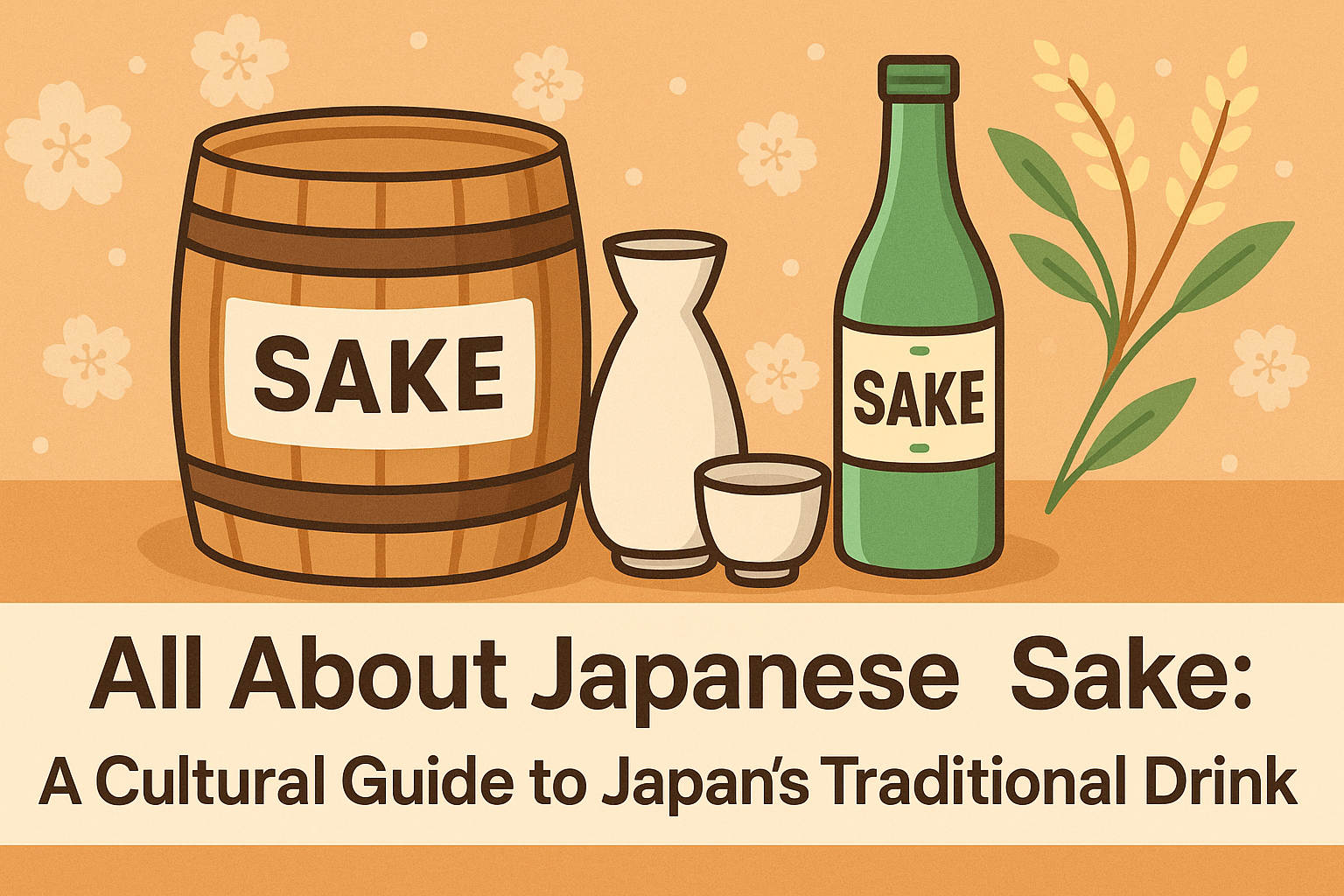👋 1. Introduction
- What is sake?
Sake is Japan’s traditional rice wine, enjoyed for centuries. It holds deep cultural importance and is often served at celebrations, rituals, and social gatherings. - A brief history and cultural significance
Sake has been brewed in Japan for over 1,000 years, with roots in Shinto ceremonies and imperial court culture. - When and where Japanese people drink sake
Sake is enjoyed in izakayas, restaurants, at home, during festivals, and religious events.
🏮 2. Types of Sake
- Junmai (純米酒): Made only with rice, water, yeast, and koji. It has a full-bodied, rich taste.
- Honjozo (本醸造酒): Has a small amount of alcohol added for a lighter, smoother profile.
- Ginjo / Daiginjo (吟醸・大吟醸): Made with highly polished rice, these are fruity, fragrant, and elegant.
- Nigori (濁り酒): Unfiltered and cloudy, often sweet and creamy.
- Sparkling Sake: Carbonated, light, and easy to drink—perfect for beginners or celebrations.
You can also include flavor notes and beginner-friendly recommendations for each type.
🍶 3. How to Enjoy Sake
- Temperature: Sake can be enjoyed hot, room temperature, or cold—depending on the type.
- Serving Vessels: Traditional ochoko cups, wooden masu boxes, or modern glassware.
- Food Pairings: Goes well with sushi, grilled dishes, and surprisingly even with cheese.
- Etiquette: Never pour sake for yourself—pour for others and let them pour for you.
📍 4. Where to Experience Sake in Japan
- Sake Breweries: Visit famous regions like Niigata or Fushimi in Kyoto for sake tours.
- Sake Bars & Izakayas: Try tasting sets with different varieties.
- Festivals: Seasonal sake events across Japan.
- Convenience Stores & Souvenirs: Affordable and widely available for tourists.
💡 5. Fun Sake Facts
- Sake is used in Shinto rituals for purification.
- Seasonal variations like fresh-pressed winter sake (shinshu).
- How to read a sake label: Polishing ratio, alcohol content, region, etc.
🙌 6. Conclusion
Sake isn’t just a drink—it’s a window into Japanese culture and tradition. Whether you’re a foodie or a cultural explorer, trying sake is a must for your Japan adventure!



コメント